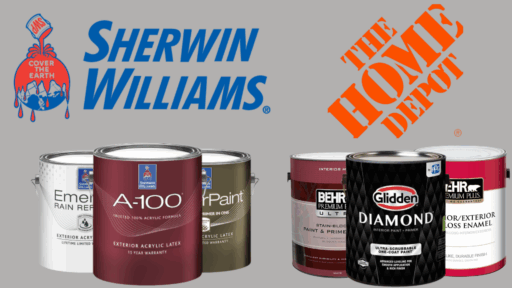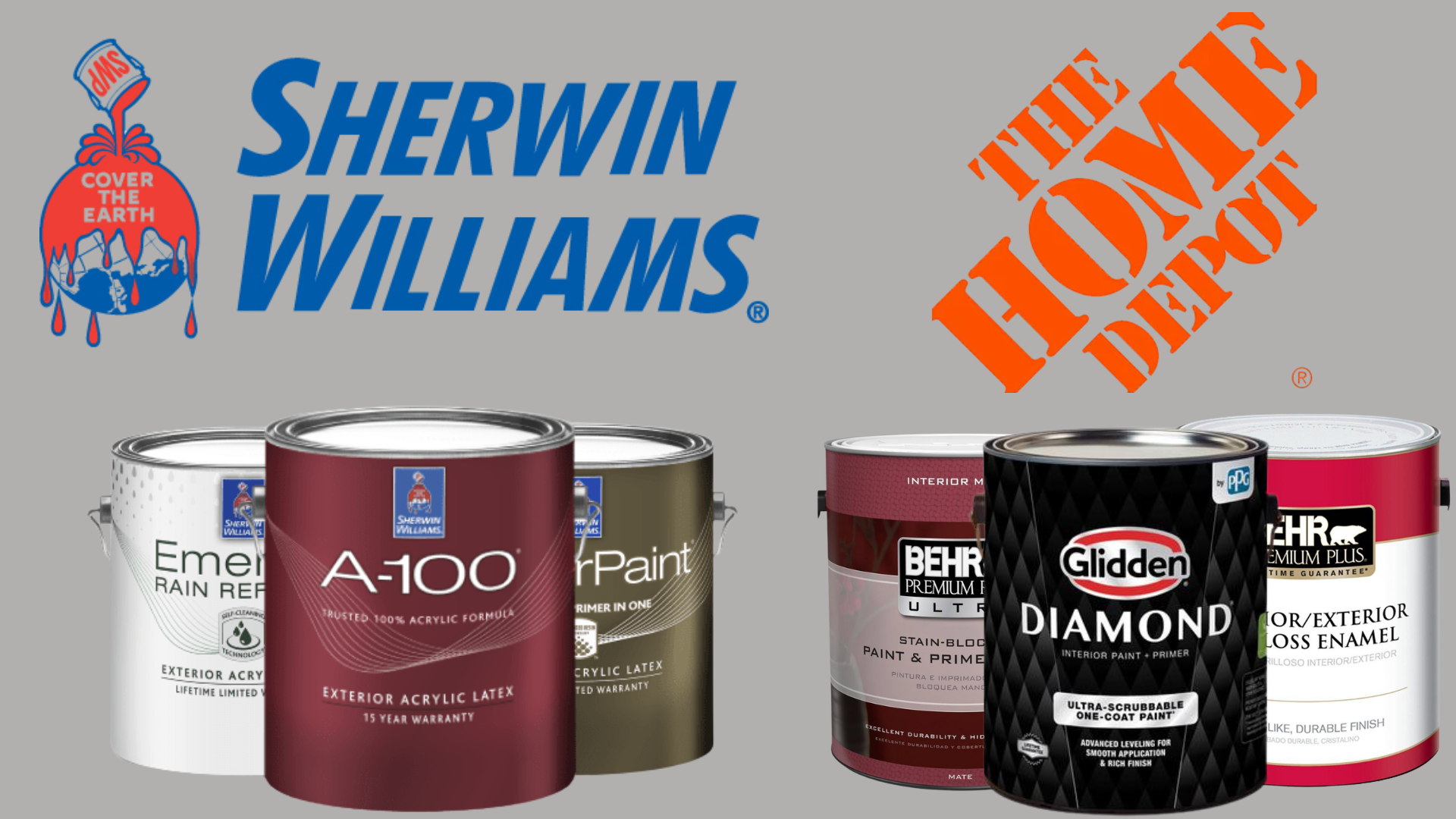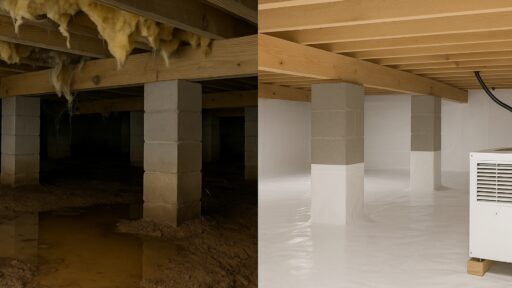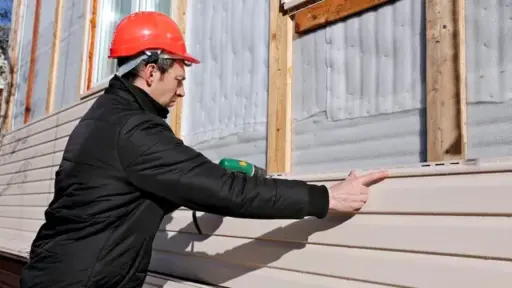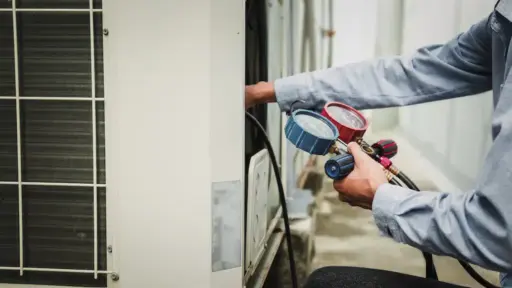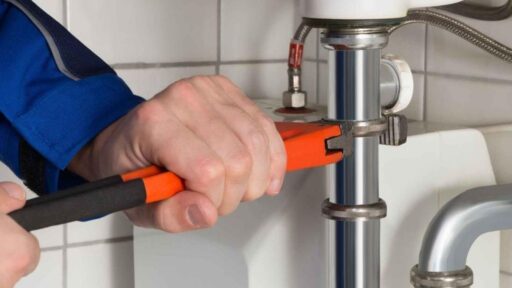Ever found a Sherwin-Williams color you loved but didn’t want to make a special trip, or pay extra, to get it?
I’ve been there. I remember seeing the perfect shade for my living room and wondering,
“Can Home Depot match this?”
The idea sounds simple: take a color and replicate it. But matching paint isn’t always exact. Lighting, base formulas, and application can shift how a color looks.
That’s why I decided to dig into how well Home Depot really matches Sherwin-Williams colors.
In this blog, I’ll share what I learned, how the matching works, what kind of results to expect, and tips from my own experience.
Let’s find out if the match is close enough to fool the eye.
Can Home Depot Match Sherwin-Williams Paint?

Yes, Home Depot can match Sherwin-Williams paint colors, and I’ve personally tried it with pretty good results.
While it’s usually close, it’s not always a perfect match because each brand has different paint bases and finishes.
If you’re painting an entire wall or room, the difference is often hard to notice. But for small touch-ups or trim, I’ve noticed the color can shift slightly.
I always recommend getting a sample pint first to test it at home. That way, you’ll know for sure if the match works before buying a full can. It’s convenient, affordable, and worth trying out.
Why Consider Matching Sherwin-Williams at Home Depot?

Matching Sherwin-Williams paint at Home Depot makes sense for a few practical reasons.
First, it’s convenient. With more locations and longer hours, Home Depot is often easier to access, especially during weekend projects.
It’s also budget-friendly. Sherwin-Williams paint is high quality but pricey.
At Home Depot, you can match the color using more affordable options, such as Behr or Glidden, which are great for large jobs.
And if your local Sherwin-Williams store is out of stock or too far away, Home Depot’s color match is a quick, easy solution.
How Does Home Depot Color Match Work?
Home Depot uses a spectrophotometer to match paint colors, including Sherwin-Williams shades. Accuracy depends on the sample you bring and the paint brand used for the match.
Scanning Samples
You can bring in a paint chip, a piece of drywall, or even a painted object.
The spectrophotometer scans the sample to measure how light reflects off it, breaking down the color into RGB values and pigment percentages.
This creates a digital “fingerprint” of the shade.
Entering SW Color Codes
If you know the exact Sherwin-Williams color name or code, such as SW 7015 Repose Gray, the staff can search their internal system.
Many Home Depot locations have a color-matching database that includes popular Sherwin-Williams colors, and this shortcut eliminates the need for scanning altogether.
Manual Adjustments
Even with a scan or code, the match may need fine-tuning. Paint associates can manually adjust the formula to better align with the desired undertone or finish.
They might tweak the tint, base, or mix ratio, especially if the first try looks off under store or natural lighting.
Keep in mind, though, that Home Depot uses its own paint bases like Behr or Glidden.
Although the color may appear similar, the finish and depth could still vary slightly due to brand differences.
Tip: Always test with a sample pint before committing to gallons.
Can You Bring in a Paint Chip or Photo?
Yes, you can bring in a paint chip, sample, or even a photo; however, not all samples provide the same level of accuracy.
For the best match, a flat, solid, and clean paint chip (at least the size of a quarter) works best.
The spectrophotometer requires a smooth, non-glossy surface to scan accurately, so any surface that is too small, shiny, or uneven may result in a slightly inaccurate formula.
Photos are trickier. A printed or phone photo can be affected by lighting, shadows, screen brightness, or printer ink.
These variables make it more difficult for the scanner to read the true color accurately.
While Home Depot may still try to match a photo, I’ve found that physical samples from your actual wall, trim, or paint card always give the most reliable results.
How Accurate Are Home Depot Matches?
Home Depot’s paint matching is usually close, and most people won’t notice a difference, especially on full walls. But for touch-ups or spots next to real Sherwin-Williams paint, the mismatch may be more obvious:
1. In-Store vs. At-Home Lighting
The store’s fluorescent lighting can make colors appear cooler or warmer than they will in your home.
A color that looks like a perfect match under Home Depot’s lights might shift under natural light, lamps, or shadows at home.
That’s why I always recommend testing the color in your space first.
2. Tint Base Differences
Even with the same RGB values, Behr or Glidden might use a different paint base than Sherwin-Williams.
These base variations affect how the final color dries, sometimes resulting in a slightly duller, brighter, or warmer appearance.
Pros and Cons of Matching Sherwin-Williams at Home Depot
Color matching at Home Depot can be a smart solution, but it’s not always perfect.
| Pros | Cons |
|---|---|
| More convenient locations | Not an exact formula match |
| Often, more affordable paint options | Slight color variations may appear |
| Access to color match tech in-store | Finish and undertone may differ due to base variations |
| Faster availability for last-minute needs | Not ideal for touch-ups on existing Sherwin-Williams paint |
| Wide range of tools and supplies in one stop | Fewer premium-grade formulas than Sherwin-Williams |
What Paint Brands Can Home Depot Use to Match Colors?
Home Depot doesn’t sell Sherwin-Williams paint but can color-match it using their own brands. Match quality can vary depending on which brand you choose:
- Behr: This is Home Depot’s premium paint line. It’s known for excellent coverage, durability, and smooth application. If you’re after a high-quality finish, Behr is usually the best choice for matching.
- Glidden: This is a more affordable option. While it doesn’t always deliver the same richness as Behr, it’s a solid pick for rental properties, touch-ups, or quick projects.
- Color Tone Considerations: Paint bases and pigments vary by brand, so even with a good match, slight differences in undertone or finish can appear. Always sample first.
Tips to Get the Best Match at Home Depot
- Bring a smooth, flat sample: Use a clean, matte piece at least the size of a quarter to ensure the scanner reads the color accurately.
- Avoid glossy or textured materials: Shiny or rough samples can reflect light inconsistently, making it harder for the spectrophotometer to produce a reliable color match.
- Ask for a sample pint first: Test a small amount of the matched paint at home before committing. This helps prevent surprises and wasted gallons.
- Compare under different lights: Paint can look different in natural, artificial, and evening light. Always check your test patch in various conditions to judge color accuracy.
- Check dry vs. wet color: Paints often dry slightly darker or warmer than they look wet. Let your sample fully cure before making a final decision.
Conclusion
Color matching at Home Depot can be a great option if you’re working on a budget or need paint fast.
I’ve used it for a few home projects, and while it’s not exact, it was close enough to make the space look great.
For big areas or full-room repaints, the difference is usually hard to notice.
However, I’ve found that for detailed work, like touch-ups, trim, or designer finishes, it’s better to stick with the original Sherwin-Williams paint. Even small shifts in tone or sheen can stand out more than you’d expect.
If you’re considering giving it a try, start with a sample pint first. Paint a section of your wall, check it under different lights, and let it dry completely.
That’s the best way to see if the match works for your space. Let me know how it turns out!

